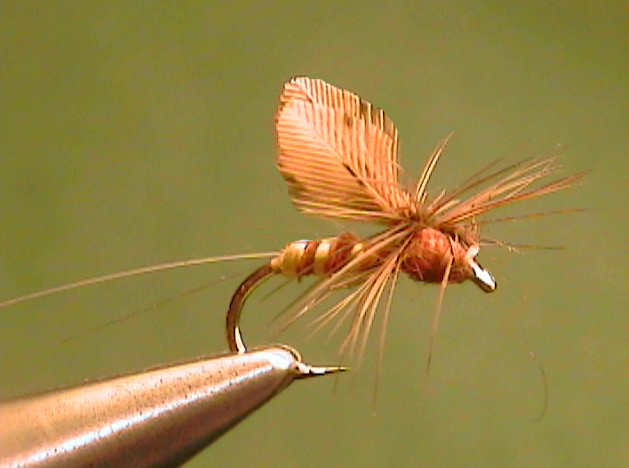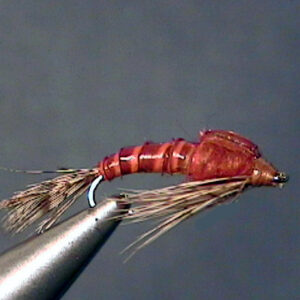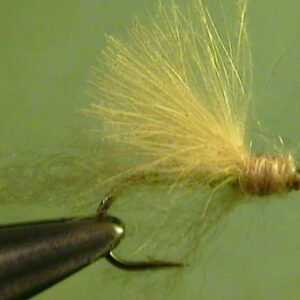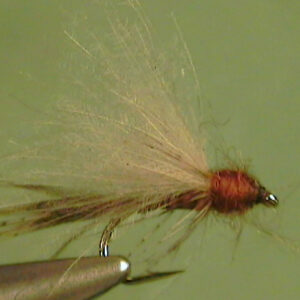Hook Size: 12/14
The Perfect Fly Western March Brown Dun is an excellent imitation of the adult stage of life of the mayfly. It imitates the mayfly as it drifts or floats on the surface, drying it wet wings enough to fly off the water onto the banks, bushes or trees where it will eventually change into the spinner stage of life. It even imitates the dun down to two or three tails and it two upright wings. It is fished on the surface as a dry fly. It should be treated with floatant.
Normally, at least on most streams in the West, the duns are the most important
stage to imitate. The time that they remain on the surface of the water depends
upon the temperature. The colder the day, the longer they tend to drift before
flying away. That of course, depends on the species.
Presentation:
In streams with fast moving, rough water, where these mayflies are typically
found, fish the dry fly using an upstream presentation along the seams of pocket
water and the edges of the runs. Leaders should be about eight foot long with a
two-foot size 4X tippet. In the moderately moving water of some of the smooth
flowing meadow sections of some streams, you may need to use a down and
across stream presentation, a longer leader and smaller tippet size.
Most of the time, these mayflies are in faster pocket water. Again, that depends
on the species, time of year the hatch occurs and the weather. If you will stick
with the current seams, you will most likely be fishing the best water. I usually try
to make a lot of short slightly up and across cast trying to keep the fly in
productive water. It is rare you can determine where the trout are feeding on the
duns from rises. That are not usually that concentrated.
Copyright 2013 James Marsh




